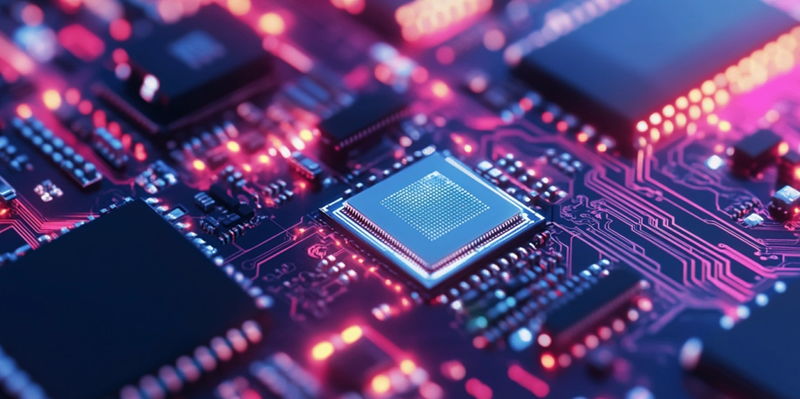The semiconductor industry is witnessing a transformative shift with the advent of multi-chiplet designs, aimed at effectively integrating multiple chips into a single package optimized for superior performance and power efficiency. One of the crucial issues in this innovative approach is the effective communication between these chiplets, which poses a significant challenge. CEA-Leti, a European technology research institute, has introduced a pioneering solution to this challenge in the form of the active optical interposer named Starac. This new development offers the potential to mitigate the inherent communication challenges in multi-chiplet designs by reducing latency, increasing bandwidth, and enhancing power efficiency.
The Rise of Multi-Chiplet Designs
The semiconductor sector is increasingly moving towards multi-chiplet designs, particularly in the realms of CPUs and GPUs. This manufacturing method involves assembling multiple smaller chips within a single package, which allows for optimized performance configurations and better power efficiency. Companies such as AMD are exploring the potential uses of chiplet designs for their Ryzen APUs, which indicates a broader industry trend focusing on these new designs. Multi-chiplet configurations provide a modular approach, making it possible to tailor the performance characteristics of a chip package to meet particular needs. This flexibility is especially beneficial for applications sensitive to power, such as mobile processors and data centers. However, these designs introduce a new set of challenges primarily related to inter-chiplet communication, which can affect the overall efficiency and performance of the system.
Introducing Optical Interposers
Optical interposers, with CEA-Leti’s Starac taking a prominent role, represent a groundbreaking innovation in the chiplet interconnection domain. Unlike traditional electrical interconnects, optical interposers employ silicon photonics, which integrates electronic and photonic circuits into a single package. This integration leverages the rapid communication capabilities of light to transmit data, offering a potentially superior alternative to traditional electrical methods. Optical interposers promise numerous technical benefits, such as reduced latency due to the inherent speed of light-guided communication. Additionally, they offer significantly higher bandwidth capacities and improved power efficiency, which results from the reduced energy required to transmit data optically rather than electrically. These advancements could herald a new era in chip design and inter-chiplet communication, pushing the boundaries of what’s possible in semiconductor technology.
Technical Advantages of Optical Interposers
The Starac optical interposer developed by CEA-Leti presents several technical advantages that could revolutionize the interconnection of chiplets. One of the primary benefits is the significant reduction in latency. Traditional architectures often suffer from communication delays, while the intrinsic low latency of light-guided networks within the optical interposer minimizes these delays considerably. Another crucial advantage is the high bandwidth capability of optical interposers. They can handle massive data transfer rates, which is essential for managing the increasing demands of inter-chiplet communication effectively. Moreover, optical interposers enhance power efficiency, requiring less power for data transmission than conventional electrical interconnection methods. This reduction in power consumption can be highly beneficial for applications where power efficiency is critical, such as mobile computing and large-scale data centers.
Challenges in Implementation
Despite the impressive potential of optical interposers, several significant challenges must be overcome for practical implementation. The manufacturing complexities and high costs associated with this technology are substantial barriers that need addressing before widespread adoption can occur. CEA-Leti is actively seeking industrial partnerships to refine the process and mitigate these issues, aiming to make optical interposers a viable solution for real-world applications. Manufacturing an optical interposer is more intricate than traditional approaches, requiring advanced techniques and specialized equipment. Additionally, the high initial costs involved could potentially deter immediate industry adoption, necessitating collaborative efforts and possibly subsidized investments to bring the technology into practical application. Overcoming these challenges is crucial for transitioning optical interposers from research prototypes to central technologies in next-generation chip designs.
Industry Context and Impact
The development of optical interposers is set against the backdrop of current chip designs that already utilize multi-chiplet configurations. Industry leaders like Intel, AMD, and Nvidia are at the forefront, employing designs that incorporate multiple compute chiplets and high-bandwidth memories (HBMs). Optical interposers could significantly alleviate latency issues, particularly when data needs to be fetched from more distant memory modules. Jean Charbonnier, R&D project leader at CEA-Leti, expresses optimism about establishing industrial partnerships in the near future to address the technical and practical challenges associated with optical interposers. These collaborations could propel the Starac optical interposer from a research prototype to a central technology in next-generation chip designs, potentially revolutionizing the way chiplets communicate and interact within a single package.
Broader Implications and Future Directions
The semiconductor industry is undergoing a major transformation with the emergence of multi-chiplet designs, which aim to integrate multiple chips into a single package optimized for enhanced performance and power efficiency. A significant challenge in this innovative approach is the efficient communication between these chiplets. CEA-Leti, a European tech research institute, has introduced a groundbreaking solution to address this issue. Their active optical interposer, named Starac, has the potential to overcome the communication obstacles in multi-chiplet designs. Starac significantly reduces latency, boosts bandwidth, and improves power efficiency, making it an essential development in the realm of semiconductors. This advancement is particularly critical as the demand for more powerful and efficient electronic devices continues to rise. The introduction of Starac represents a crucial step forward, ensuring that multi-chiplet designs will become more viable and effective. The semiconductor industry can now look forward to even greater innovations, driven by this significant leap in technology.

